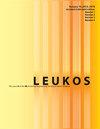不同光谱功率分布对蓝光滤光人工晶状体介观视力的影响
IF 2.6
2区 工程技术
Q2 CONSTRUCTION & BUILDING TECHNOLOGY
引用次数: 2
摘要
摘要:本研究旨在分析典型夜间驾驶条件下,老年受试者白内障手术及滤蓝人工晶状体植入术前后的光谱透过率与普通路灯光谱功率分布的相互作用。分析了高压钠灯和金属卤化物灯在不同介观照明条件下离轴视觉的对比阈值和视觉反应时间。三组不同光谱透过率的受试者参与:年轻受试者为对照组,老年老年性白内障受试者和白内障手术并植入蓝光滤光人工晶状体的相同受试者。根据不同的视觉任务,光谱功率分布和光谱透射率之间存在明显的相互作用。透明的眼介质允许受益于卤化物灯的更大的短波长内容。然而,白内障增加了对比阈值和视觉反应时间值,也影响了光谱功率分布对这些视觉任务的影响。手术和人工晶状体植入术后,两种灯的视觉性能都有所改善,而蓝色滤光片似乎会影响光谱透射率,而光谱透射率会影响在波长更短的灯提供的光线下的视觉性能。白内障手术可以改善对比度阈值和视觉反应时间任务,尽管人工晶状体的蓝光过滤似乎会阻止视觉系统从短波长的大发射灯中受益。本文章由计算机程序翻译,如有差异,请以英文原文为准。
Effect of Different Spectral Power Distributions on Mesopic Visual Performance with Blue Light-filtering Intraocular Lens
ABSTRACT The purpose of this work is to analyze the interaction between the spectral transmittance of old-aged subjects, before and after cataract surgery and blue light-filtering intraocular lens implantation, and the spectral power distribution of common street lamps, under conditions typical of nighttime driving. We analyzed contrast threshold and visual reaction time in off-axis vision at different mesopic illumination conditions provided by high-pressure sodium and metal halide lamps. Three groups of subjects with different spectral transmittances participated: young subjects as control group, old-aged subjects with senile cataracts and the same subjects after cataract surgery and blue light-filtering IOL implantation. A clear interaction appears between the spectral power distribution and the spectral transmittance, depending on the visual task. Transparent ocular media allow benefiting from the greater short-wavelength content of the halide lamp. However, cataracts increase contrast threshold and visual reaction time values and also affects how the spectral power distribution influences these visual tasks. After surgery and intraocular lens implantation, visual performance improves for both lamps and the blue light-filter seems to influence spectral transmittance, which affects visual performance under light provided by greater short-wavelength content lamps. Cataract surgery is responsible for an improvement in contrast threshold and visual reaction time tasks, though blue light-filtering of the intraocular lens seems to prevent the visual system from benefiting from lamps with greater emission at short wavelengths.
求助全文
通过发布文献求助,成功后即可免费获取论文全文。
去求助
来源期刊

Leukos
工程技术-光学
CiteScore
7.60
自引率
5.60%
发文量
19
审稿时长
>12 weeks
期刊介绍:
The Illuminating Engineering Society of North America and our publisher Taylor & Francis make every effort to ensure the accuracy of all the information (the "Content") contained in our publications. However, The Illuminating Engineering Society of North America and our publisher Taylor & Francis, our agents, and our licensors make no representations or warranties whatsoever as to the accuracy, completeness, or suitability for any purpose of the Content. Any opinions and views expressed in this publication are the opinions and views of the authors, and are not the views of or endorsed by The Illuminating Engineering Society of North America and our publisher Taylor & Francis. The accuracy of the Content should not be relied upon and should be independently verified with primary sources of information. The Illuminating Engineering Society of North America and our publisher Taylor & Francis shall not be liable for any losses, actions, claims, proceedings, demands, costs, expenses, damages, and other liabilities whatsoever or howsoever caused arising directly or indirectly in connection with, in relation to, or arising out of the use of the Content. Terms & Conditions of access and use can be found at http://www.tandfonline.com/page/terms-and-conditions .
 求助内容:
求助内容: 应助结果提醒方式:
应助结果提醒方式:


